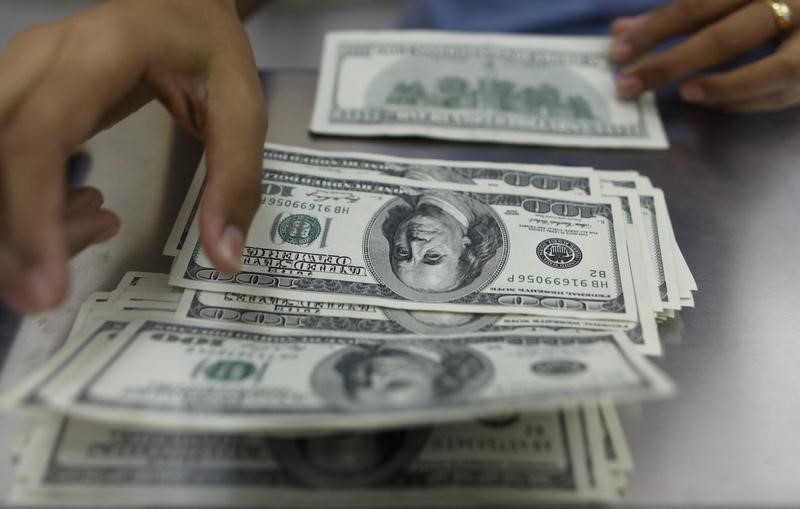By Peter Nurse
Investing.com -- The dollar edged higher in early European trade Thursday, finding support from comments suggesting the Federal Reserve will soon have to discuss tapering its massive bond-buying program, thus tightening monetary policy.
At 2:55 AM ET (0755 GMT), the Dollar Index, which tracks the greenback against a basket of six other currencies, was up less than 0.1% at 90.065, after climbing above 90 overnight for the first time since the start of the week.
EUR/USD traded flat at 1.2191, GBP/USD fell slightly to 1.4116, near a one-week low, while the risk-sensitive AUD/USD was flat at 0.7739.
Numerous Fed officials have this week sought to downplay immediate concerns that rising inflationary pressures will force the central bank to tighten monetary policy sooner than its previous guidance would suggest, to the detriment of the dollar.
However, the U.S. currency received some support late Wednesday when Randal Quarles, the Fed Vice Chairman for Supervision, stated that the central bank will need to start discussing shortly plans to reduce its bond purchases if the economy continues to show massive improvement as it emerges from the pandemic.
“If my expectations about economic growth, employment, and inflation over the coming months are borne out,” Quarles said Wednesday, “it will become important for the FOMC to begin discussing our plans to adjust the pace of asset purchases at upcoming meetings.”
Although discussing changes could still be a far way from actually implementing them, this does represent a shift in tone by a senior Fed official.
U.S. yields rose slightly overnight, with the benchmark 10-year Treasury yield up at 1.58%, providing support from the dollar.
There are a number of important economic data releases due later Thursday, including weekly jobless claims, first-quarter GDP and durable goods, but the focus will turn to Friday’s release of the personal consumption expenditures index, the Fed's preferred inflation gauge.
Economists expect core PCE prices to jump 2.9% year-on-year in April, compared with a year-on-year rise of 1.8% a month earlier.
